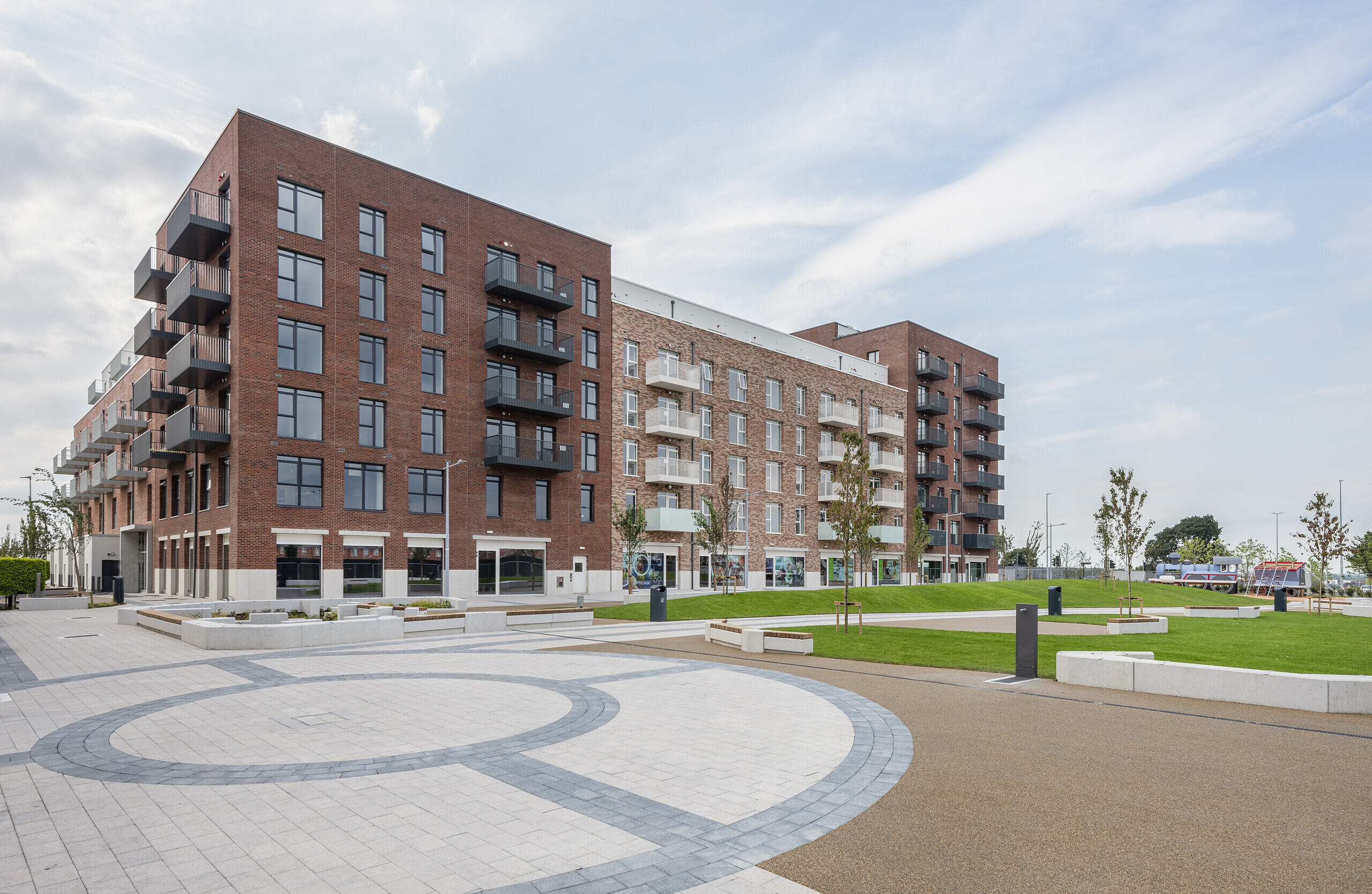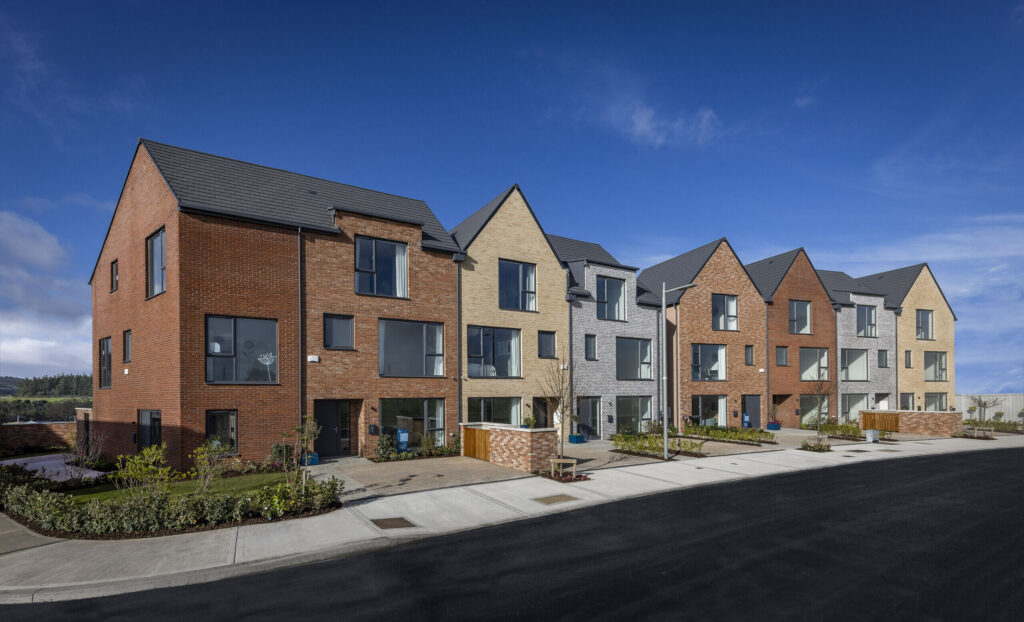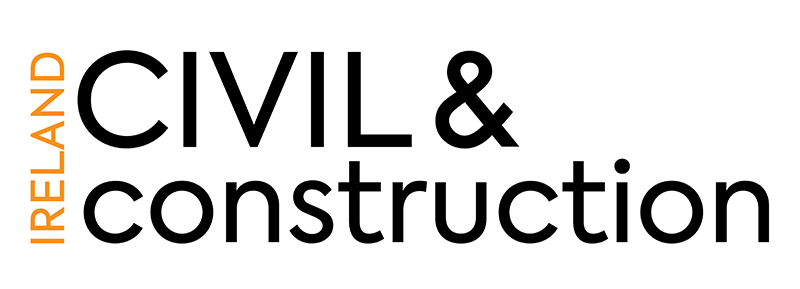
In 2023, Quintain proudly handed over the keys to 718 homes, marking a significant achievement. While their focus prioritizes efficiency and affordability over sheer size, this accomplishment solidifies Quintain’s position as Ireland’s largest privately owned housebuilder.
To achieve this level of productivity, Quintain’s production line operates on a much larger scale. They currently manage 11 active construction sites, where 2,000 homes are under construction. The total construction cost for these projects is close to €600 million. While multiple other sites will commence in 2024, Quintain have a medium-term ambition to deliver 1,500 homes annually and they have 7,000 plots with planning permits in place for more than half of their land portfolio, providing a strong platform to achieve this scale target.
Quintain’s success is attributed to a dedicated team of in-house professionals, including experts in Development, Sales, Finance, Commercial, and Construction. Within Quintain’s Construction Team, there are two distinct divisions:
Low-Density Division: This team focuses on single-family homes and other low-density housing projects.
High-Density Division: Responsible for constructing apartment complexes and other high-density developments.
In this article, we delve into an example project from each division, shedding light on their unique processes and the challenges they encounter.
The Crossings: A High-Density Residential Scheme in Adamstown, Co. Dublin
In 2023, Quintain celebrated the completion of the first phase of The Crossings, a remarkable development that seamlessly blends residential, retail, and commercial spaces. Here are the key highlights:
Phase One Accomplishments:
279 residential units alongside 11,700 square meters of retail space.
Upon full completion, The Crossings will encompass:
975 residential units
18,000 square meters of retail space
3,500 square meters of commercial areas, including a civic/library building, a creche, and an enterprise centre.
At its heart lies a central urban plaza, meticulously designed to breathe life into the neighbourhood. This vibrant space will foster community interaction and become a destination where people spend quality time.
The Viability Challenge:
The viability of apartment developments has been a well-documented challenge. The Crossings has been eagerly anticipated for over two decades, with several false starts due to apartment viability concerns.
Efficiency in Apartment Design:
Quintain tackled this challenge head-on by re-evaluating every aspect of the scheme.
Design efficiency became a cornerstone of the process for all apartment development
Key Performance Indicators (KPIs) played a crucial role:
Ratios such as Nett to gross and wall to floor area were closely monitored.
Quintain emphasized repetition in apartment layouts, optimizing bathroom, window, and kitchen types.
Remarkably, achieving these KPIs didn’t compromise the apartment layouts or architectural aesthetics. Instead, it significantly reduced costs and improved affordability.
Car-Parking Solutions:
Initially, The Crossings was planned with a large underground basement car park—a major driver of unviability. Quintain rethought this approach:
Instead of an expensive, carbon-heavy underground concrete basement, they opted for a landmark multi-story car park.
Collaborating closely with their architects, Quintain designed this car park to be both cost-effective and impactful.
Sustainability at the Heart of The Crossings
From its inception, sustainability has been woven into the very fabric of The Crossings. This innovative development, situated in Adamstown, Co. Dublin, seamlessly integrates residential, retail, and commercial spaces. Here’s how they’ve championed sustainability throughout the project:
Strategic Location:
Immediate Proximity: The Crossings stands adjacent to the Adamstown Train Station and a Dublin Bus Terminus.
Promoting Public Transport: Our vision is to encourage commuters who currently drive into the city to embrace the convenience of “park and ride” using the robust public transport network.
Electric Vehicle Charging Infrastructure:
Forward-Thinking Approach: In anticipation of future needs, Quintain have installed electric vehicle charging points in 25% of the car parking spaces.
Commuter Convenience: Park & Ride users can now charge their electric vehicles while commuting via public transport.
Climate Action Goals: These initiatives align with the Government’s Climate Action Plan, contributing to reduced emissions and a greener future.
NZEB Compliance and Building Performance:
Nearly Zero Energy Building (NZEB): Quintain’s design adheres to NZEB standards, ensuring energy efficiency and minimal environmental impact.
Building Regulations: Quintain have met and exceeded current building regulations, achieving an impressive BER A3 rating.
High-Performance Fabric: The building envelope boasts exceptional insulation and airtightness, minimizing energy loss.
Solar Power: Rooftop photovoltaic panels harness renewable energy, reducing reliance on conventional power sources.
Materials and Longevity:
Eco-Conscious Choices: Quintain have utilized GGBS Concrete (Ground Granulated Blast Furnace Slag) and recyclable aluminum façade elements.
Low-Energy Fittings: Thoughtfully selected fixtures contribute to energy savings.
Robust Specifications: Durability and low maintenance were key considerations, ensuring the building’s longevity.
UN Sustainable Development Goals (SDGs):
Aligned with Global Objectives: When viewed through the lens of the SDGs, The Crossings meets criteria for 13 out of 17 goals.
Quintain’s commitment extends beyond construction—it’s about creating a sustainable community where people thrive. The Crossings stands as a testament to affordable living, innovative thinking, efficient design, dedication to a greener, more resilient future and a commitment to creating vibrant, sustainable community.
Cherry Lane: A Low-Density Residential Scheme in Cherrywood, Co. Dublin
Cherrywood is a new neighbourhood in South County Dublin and Cherrylane is one of the first housing developments within the Cherrywood SDZ with 168 homes and a variety of two-, three- and four-bedroom homes.
There were two challenges in this development to be considered during the planning and construction stages. Firstly, the development was planned on a valley that ran through Cherrywood which required 53,000cu.m of fill to be imported at a considerable cost and secondly it also required a new Architectural influence. Both challenges are considered in detail in this article.

1. Soil Stabilisation
Importing 53,000 cubic meters of quarried aggregates to the site for filling the valley upon which the houses in Cherry Lane were built would have been unthinkable. Not only due to the prohibitive financial cost involved, but also the carbon footprint resulting from quarrying the material and the 10,600 truck journeys required to transport it on-site. Additionally, the nuisance factor of these truck movements on the local community meant that a better solution to this traditional method had to be found.
As with all building sites, Cherrywood had an abundance of surplus soil that needed to be exported off-site, generally to a landfill. This situation opened up an opportunity for a Soil-Stabilization solution to meet the fill needs of Cherry Lane.
Soil Stabilization is a well-established technique that treats soil with a binder agent (generally cement or lime, depending on the soil composition). This renders the soil structurally acceptable as a filling material for constructing buildings. Cherry Lane subsequently became one of the largest Soil Stabilization projects in Ireland, requiring 53,000 cubic meters of fill to a depth of 5.5 meters at the deepest point.
A Sustainable Solution:
The Soil Stabilization technique offered several advantages. Firstly, it was a minimum of 10 weeks faster than the traditional filling method. Secondly, it was considerably more cost-effective. These two advantages alone fulfilled Quintain’s aim of providing quality homes as efficiently and affordably as possible. Moreover, the Soil Stabilization approach significantly reduced the carbon footprint—approximately 65%—by minimizing waste sent to landfills and emissions-intensive quarrying and transportation of materials to the site.
2. A need for a new Architectural influence
When creating a new town in Cherrywood, together with their Architects Quintain carefully looked at older cities and the grain that they create over time, with different buildings and architectural styles. Quintain considered how they would create this, in a contemporary way, in the new town of Cherrywood so that it felt timeless as a place.
Part of Quintain’s strategy for Cherrywood was to set up different character areas with different design teams all working together under one masterplan. This led to a palette of materials and landscape features that was consistent, that knitted the overall masterplan together but individual styles which gave different character areas, which people would recognise as their individual neighbourhoods.
Quintain chose to work closely with Urban Agency Architects on the Cherry Lane project to develop a masterplan for this area that would be influenced by the City of Copenhagen and particularly the famous port of Nyhavn with its identity of vertical, coloured buildings with different heights and roof profiles. This makes it one of the most important spaces in a city which is famous internationally for its design and quality of life. Quintain studied this place and asked how they can learn from its history and language and bring some of its placemaking qualities to Cherry Lane.
The resultant placemaking strategy behind Cherry Lane was to work with materials to express homes vertically, contrasting different brick colours.
The strategy was to use 4 different brick colours, vertically differentiating each house and alternating roof profiles to give an individuality to each home. In the overall masterplan there was a series of different typologies of houses, duplexes and apartments that gives further differentiation to each street. All these combined with different height buildings, and careful detailing means that street means people can feel their home is special, and not the same as each one on the street.
As with everything Quintain do, placemaking, affordability, efficiency and sustainability are the driving elements in the project, and alongside the social sustainability of the design, they drove standards in the environmental sustainability and construction of the project. The homes in the development are all A rated, with renewable energy built into each home. Quintain set out to make this an exemplar development and lower the overall embodied carbon of the project by using timber frame and its carbon sequestering properties. These steps combined with the soil-stabilisation technique greatly increases the overall sustainability of the project.
Overall, the project was about learning from placemaking in the best cities in the world and making a new town that is a benchmark sustainable development. The design is rooted in strong placemaking principles of creating individuality and making spaces that will allow new residents to flourish into strong communities.
Quintain’s goal is to create neighborhoods that are sustainable and affordable while improving residents’ quality of life. We design mixed-use areas to promote inclusivity and vibrant communities with all amenities close to peoples homes. By prioritizing residents’ needs and using smart design, we contribute to thriving and sustainable environments.
Quintain’s approach is characterised by a constant eye on value for money combined with creativity, innovation, and an entrepreneurial spirit.
